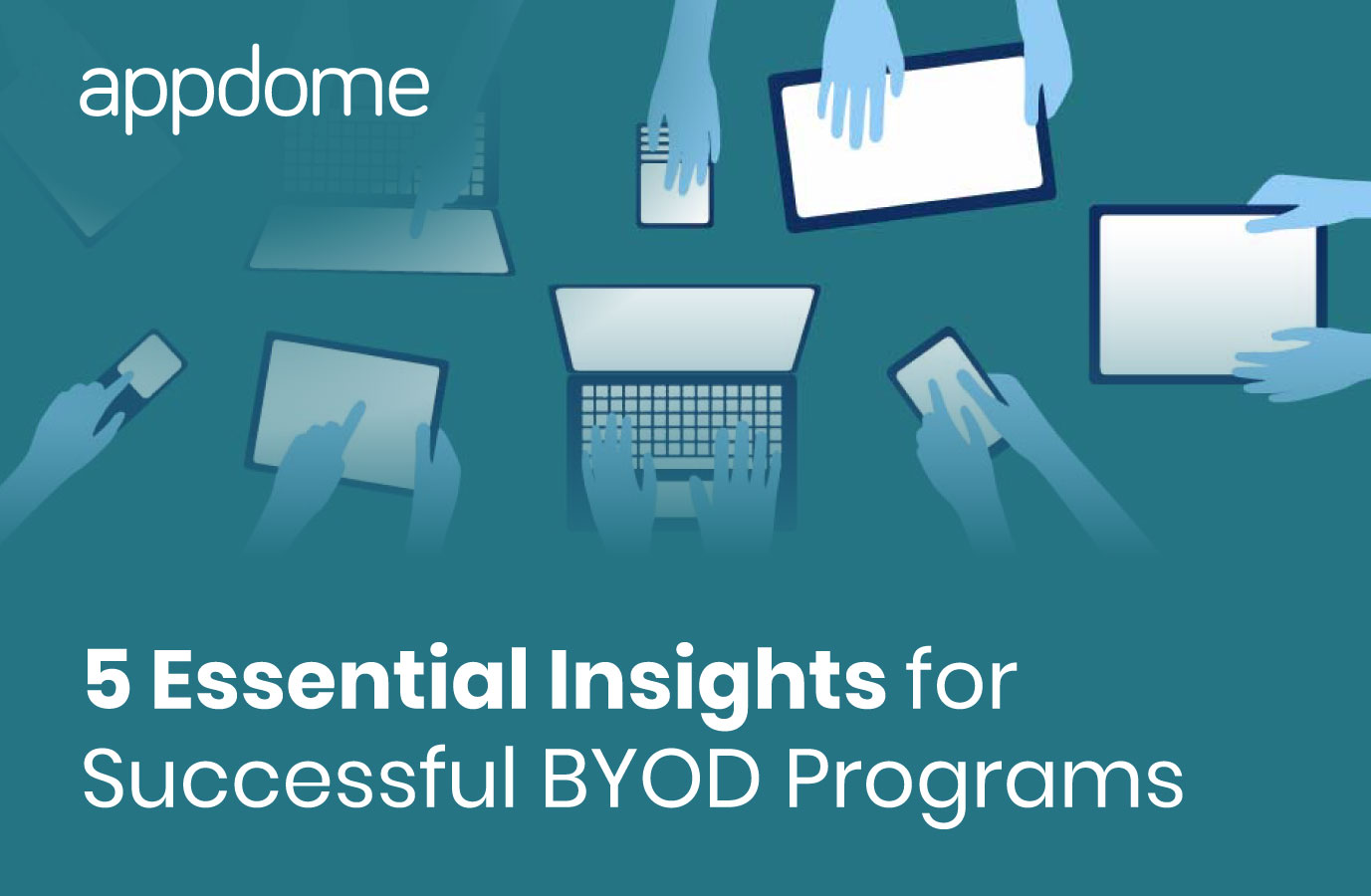How do you create successful BYOD Programs?
This blog outlines 5 essential insights to create successful BYOD programs, including how to avoid common challenges associated with BYOD.
When it comes to predicting the weather, being wrong 20% of the time is OK; in fact, depending on where you live, it might be pretty good. However, when it comes to running a BYOD program, a 20% failure rate isn’t just bad – it is unacceptable. According to Gartner report on BYOD programs and predictions, BYOD is one of the highest growth segments in enterprise mobility and it’s become the default mobility use case for most organizations.
5 Essential Tips for Creating Successful BYOD Programs
So what’s behind this dismal statistic? It’s that BYOD presents new challenges and complexities for IT executives who must grasp 5 essential insights if they want to create secure, compliant and successful BYOD programs:
1. Get Holistic
Mobile operating systems “flatten” both business and personal information into a seamless, simple, easy and friendly user experience. That’s the good news. The bad news is that mobile devices are extremely vulnerable, and fast becoming the preferred target of threat actors across the world. IT executives must therefore abandon PC-era thinking and implement a mobile security architecture that takes a holistic approach, since blocking all possible threat vectors in a mobile world is impractical;.
2. Get Seamless
Mobile devices in the workplace — which these days could be anywhere from the board room, to Starbucks, to a train and so on — aren’t going away. Not only do they vastly and cost-effectively improve productivity, performance and communication, but employees LOVE mobile. In fact, many would consider leaving their job if forced to work only and always at their desktop (perish the thought!). So, since mobile is here to stay and there’s no going back, IT executives need to focus on how to make security as seamless and comprehensive as possible. And while technology is a big part of this, so is user engagement. And that means user privacy and other user priorities must be taken into consideration.
3. Secure the Data
The world of BYOD programs is embodied by mixed-use, cross-platform, multi-framework – which means there is no assured chain of trust. As such, merely “managing devices” is no longer a security option, and IT executives must find ways to completely secure, encrypt and control business data, regardless of what kind of device that data is stored on, is sent to, or derived from.
4. Think Zero-Trust and Defense in Depth
In light of a porous chain of trust and multiple attack vectors, IT executives need to shift their security paradigm from “zero tolerance” to “zero-trust” and “defense in depth”. Zero trust security model assumes that devices and apps are already compromised, therefore everyone and everything must be verified. Defense in depth is a pragmatic approach positions the organization to remain protected even when outer lines of defense are breached, as inner layers adjust to protect essential assets. In other words: to support a successful BYOD program, the question IT executives need to ask is no longer “how can we make sure that we’re never breached?”; instead, it must be “how can we stay protected in the event of a breach?”
5. BYOD Programs get Cloudy
To fully exploit the benefits of mobile, organizations need to give their employees access to SaaS and mobile apps. And not just their salesforce, either. These days, there are many popular apps that support CRM, HR, BI and the list goes on. However, conventional Single-Sign-On (SSO) solutions are designed for browser-based apps and not for mobile apps, which typically must store credentials on the device. And VPN routing isn’t practical either: the security gains are more than offset by slow response times and a degraded user experience. As such, given the risk of device theft, loss or misuse, IT executives must ensure that their BYOD program features direct and secure access to the SaaS cloud, so that they can enforce — or reject — authentication for any app.
To learn more about how BYOD programs are evolving in the COVID-19 era, check out our e-guide on Mobile Apps in the Digital Workplace 2020.Get Guide Now






